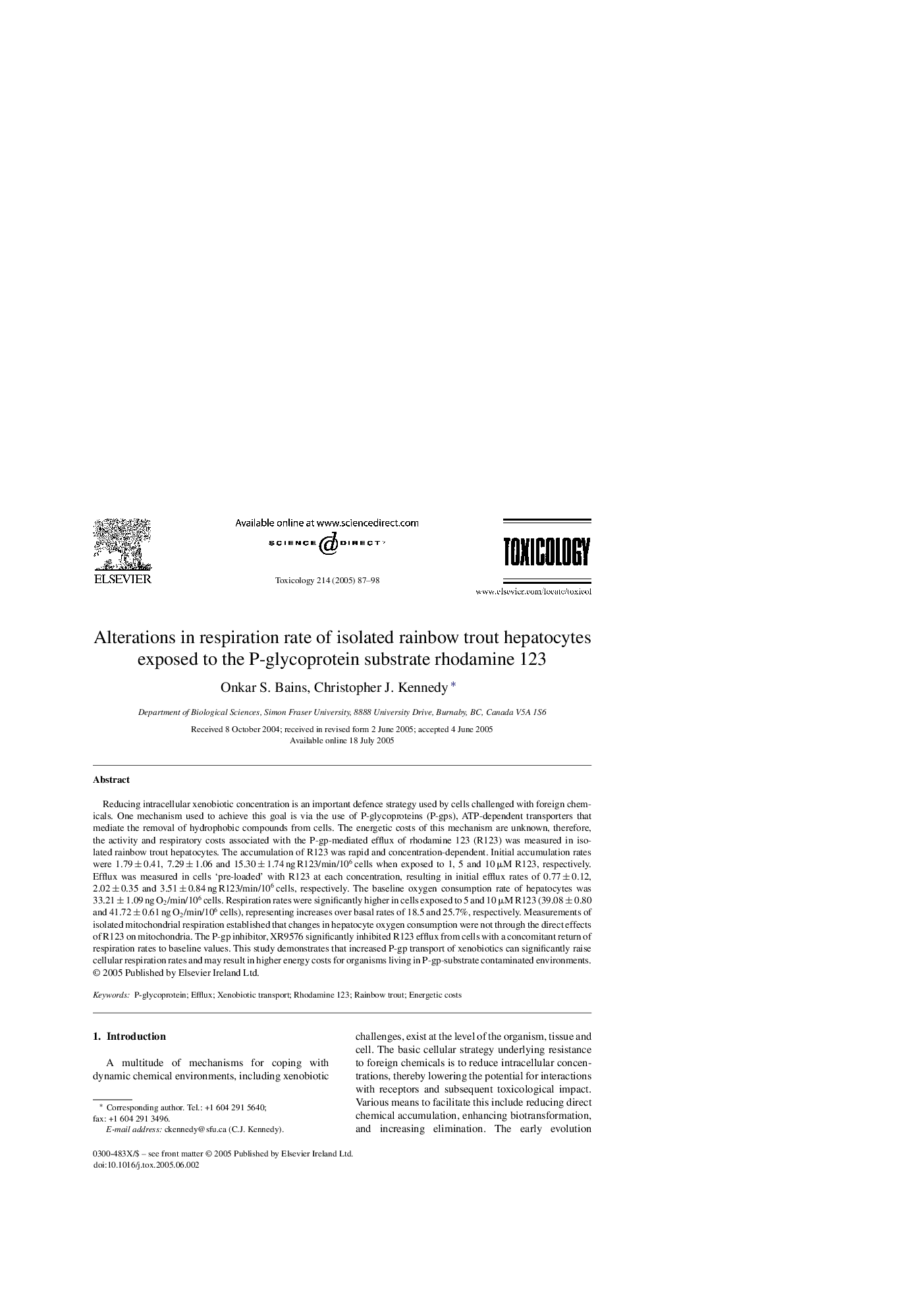| Article ID | Journal | Published Year | Pages | File Type |
|---|---|---|---|---|
| 9034573 | Toxicology | 2005 | 12 Pages |
Abstract
Reducing intracellular xenobiotic concentration is an important defence strategy used by cells challenged with foreign chemicals. One mechanism used to achieve this goal is via the use of P-glycoproteins (P-gps), ATP-dependent transporters that mediate the removal of hydrophobic compounds from cells. The energetic costs of this mechanism are unknown, therefore, the activity and respiratory costs associated with the P-gp-mediated efflux of rhodamine 123 (R123) was measured in isolated rainbow trout hepatocytes. The accumulation of R123 was rapid and concentration-dependent. Initial accumulation rates were 1.79 ± 0.41, 7.29 ± 1.06 and 15.30 ± 1.74 ng R123/min/106 cells when exposed to 1, 5 and 10 μM R123, respectively. Efflux was measured in cells 'pre-loaded' with R123 at each concentration, resulting in initial efflux rates of 0.77 ± 0.12, 2.02 ± 0.35 and 3.51 ± 0.84 ng R123/min/106 cells, respectively. The baseline oxygen consumption rate of hepatocytes was 33.21 ± 1.09 ng O2/min/106 cells. Respiration rates were significantly higher in cells exposed to 5 and 10 μM R123 (39.08 ± 0.80 and 41.72 ± 0.61 ng O2/min/106 cells), representing increases over basal rates of 18.5 and 25.7%, respectively. Measurements of isolated mitochondrial respiration established that changes in hepatocyte oxygen consumption were not through the direct effects of R123 on mitochondria. The P-gp inhibitor, XR9576 significantly inhibited R123 efflux from cells with a concomitant return of respiration rates to baseline values. This study demonstrates that increased P-gp transport of xenobiotics can significantly raise cellular respiration rates and may result in higher energy costs for organisms living in P-gp-substrate contaminated environments.
Related Topics
Life Sciences
Environmental Science
Health, Toxicology and Mutagenesis
Authors
Onkar S. Bains, Christopher J. Kennedy,
